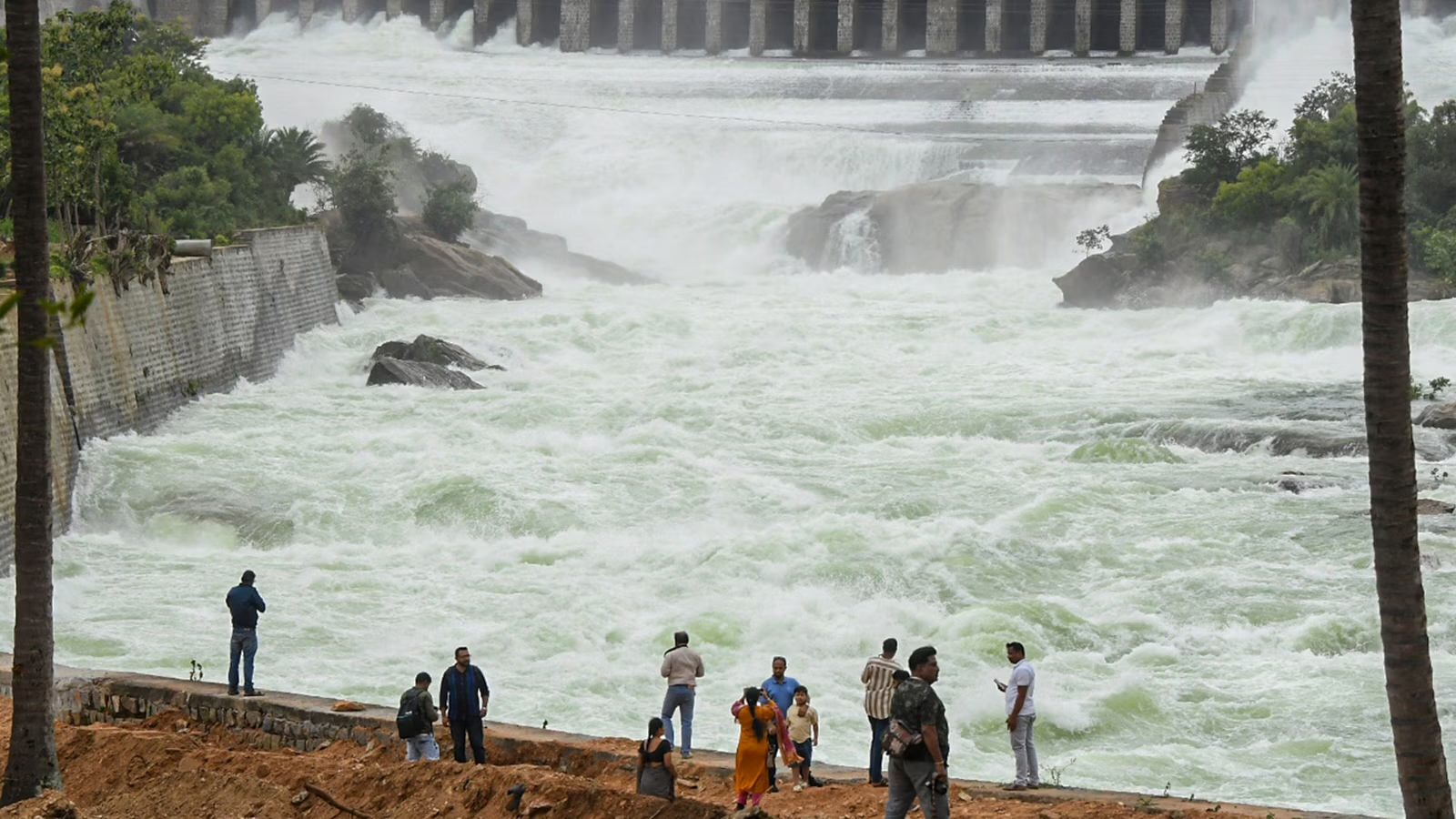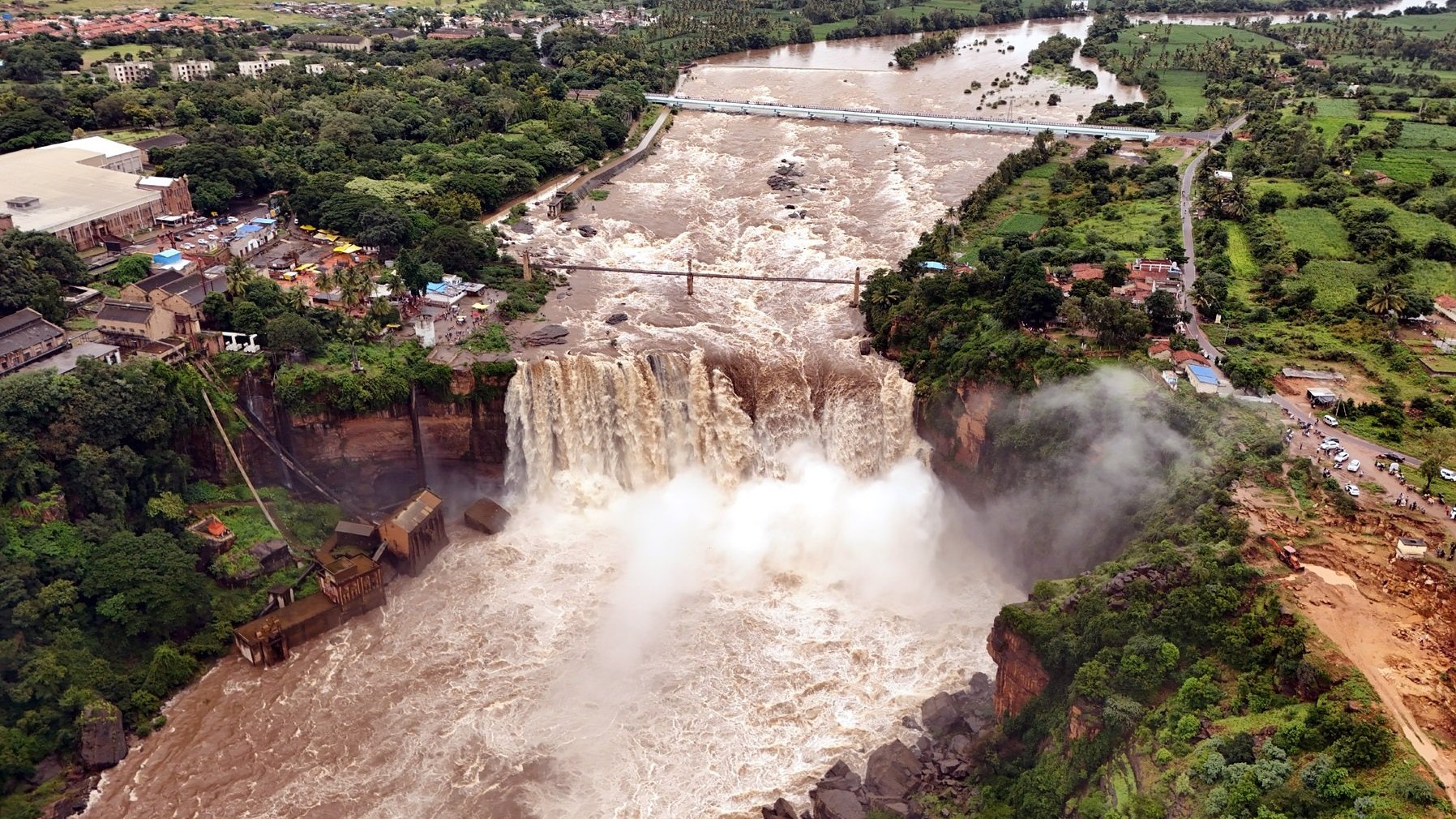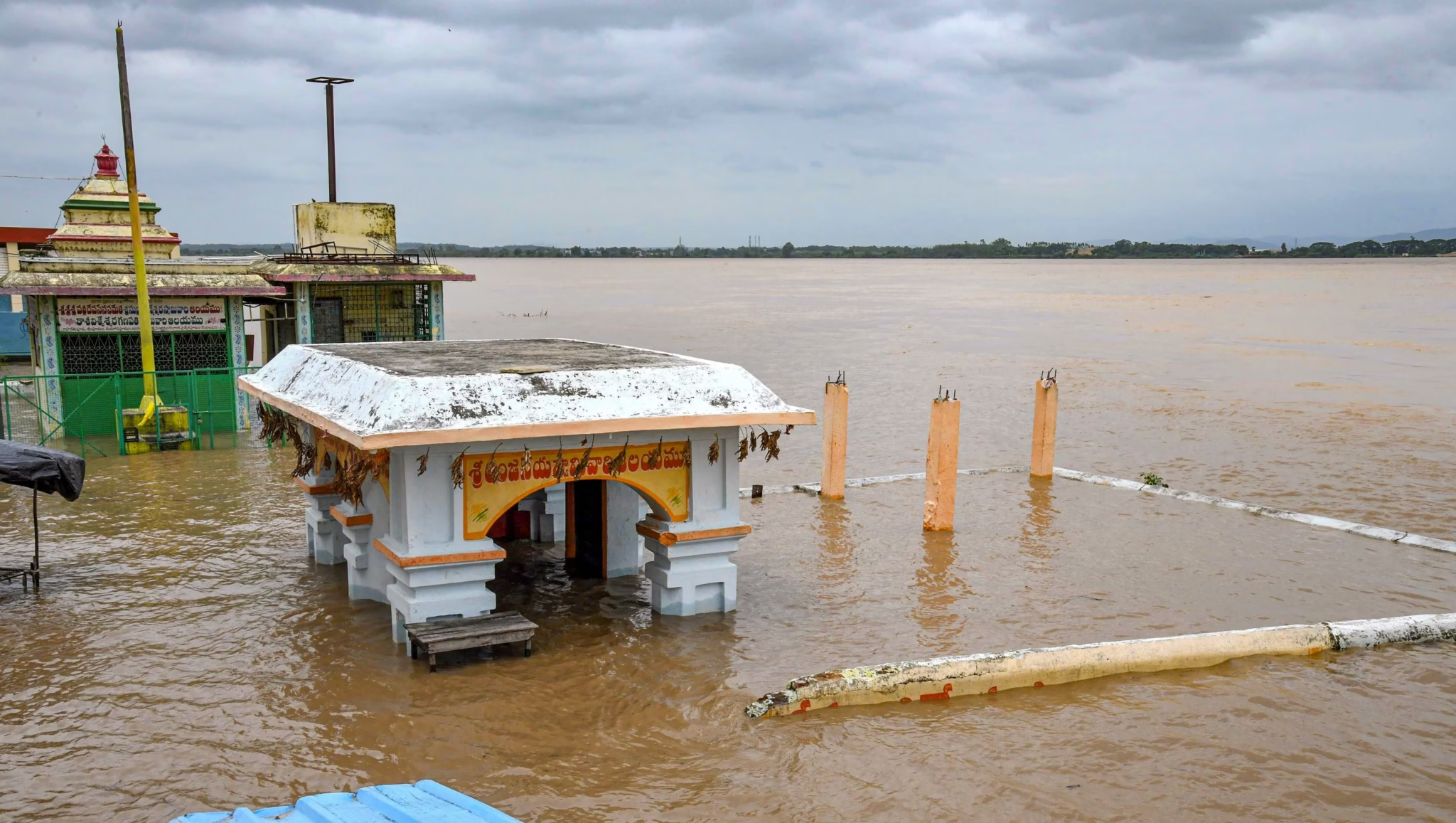Thousands of people across northern Karnataka are being moved to safety today. The Karnataka floods have turned quiet villages into underwater zones, and things are getting serious fast. The Krishna River and its smaller rivers are overflowing, forcing officials to move people out of danger zones.
But this isn’t just any ordinary flood. The situation is getting worse by the hour.
Rivers Overflow Beyond Control
The Karnataka floods started building up over the past few days as heavy rains pounded the region. The Krishna River, which usually flows peacefully through the state, is now at dangerous levels. Officials at the Almatti Dam are releasing a massive 2.5 lakh cusecs of water – that’s way more than the normal 1.6 lakh cusecs coming in.
Think of it this way: all that extra water has to go somewhere, and right now it’s heading straight toward villages downstream.
“When dam releases increase to 5 lakh cusecs, villages like Masuti would be fully submerged,” officials warned. That’s the harsh reality of the current situation.
What Caused These Karnataka Floods
The Karnataka floods didn’t happen overnight. Heavy rains in neighboring Maharashtra have been sending extra water down the Krishna River for days. When you add Karnataka’s own rainfall to it, the result is severe flooding across the region.
District Commissioner Sangappa in Bagalkot has already set up relief centers. In Mirji village of Mudhol taluk, families who’ve lived by the river for generations are now staying in temporary shelters. These are local residents who have lived by the river for generations, and even they’re saying this Karnataka floods situation is different.
Schools Shut, Red Alert Declared

The India Meteorological Department has taken serious action. They’ve issued a red alert for very heavy rain across Karnataka. A red alert indicates the highest level of weather warning, signaling extremely dangerous conditions.
All schools, colleges, and even Anganwadi centers in Dharwad district were closed on Wednesday. Students will remain at home as authorities prioritize safety over regular academic activities
Here’s what the rainfall numbers look like:
- North Interior Karnataka got 7-11 cm of rain on Tuesday alone
- Coastal areas saw up to 22 cm in Castle Rock, 19 cm in Manki, and 15 cm in Jagalbet.
- South Interior Karnataka recorded 16 cm each in Kottigehara and Agumbe, while Jayapura, Koppa, and Sringeri received 7–9 cm.
That might not sound like much, but when it falls this fast over this much area, the Karnataka floods become inevitable.
The Human Cost
Right now, 47 houses have been partially damaged in the Karnataka floods, but thankfully no lives have been lost. That’s the most important number to remember. Families can rebuild houses, but they can’t replace loved ones.
Over 4,000 people have been moved to relief camps across the affected districts. These camps provide essential facilities including temporary sleeping arrangements, food, and medical assistance. For families who’ve never left their villages, it’s a scary experience.
“We have cordoned off all areas within a 3 km radius of the river due to the floods,” one official explained. That’s a lot of land that’s now off-limits to the people who call it home.
Villages Underwater
The Karnataka floods have hit some areas harder than others. In Belagavi district, the Vedaganga river overflowed and completely submerged surrounding villages. Yemagarani village is now under 10 feet of water – that’s taller than most rooms in your house.
A 40-foot-tall bridge that connects communities? Also underwater.
The Ghataprabha and Malaprabha rivers, which feed into the Krishna, are also causing problems. These tributaries are like smaller streams that join the main river, but right now they’re acting more like angry torrents.
Villages with names like Chandoor, Manjari, Ankali, and Kallol are completely flooded. For people living there, the Karnataka floods have erased familiar landmarks and turned their neighborhoods into lakes.
Dam Management Under Pressure
The Almatti Dam is at the center of this Karnataka floods crisis. Officials there face a challenging situation – they need to release water to prevent the dam from overflowing, but every drop they release adds to the flooding downstream.
The Narayanpur Dam is also dealing with rising inflows that could reach 2.6 lakh cusecs in the coming hours. That’s going to make the Karnataka floods situation even more challenging.
“Over 3 lakh cusec of water was released from Almatti Dam on Monday as well. This is the highest outflow we have seen in the last 10 years,” one official noted.
These aren’t just numbers on a chart – they represent real water flowing toward real communities.
What Happens Next?
The Karnataka floods aren’t going to disappear overnight. Weather forecasters are still predicting more rain, which means more water flowing into already overflowing rivers. Officials are keeping a close eye on the situation and are ready to evacuate more people if needed.
Relief camps are being stocked with food, water, and medical supplies. The government is also preparing for the possibility that some families might need to stay in these camps for weeks, not just days.
For now, the focus is on keeping people safe. Everything else – damaged crops, flooded homes, broken roads – can be dealt with later.
The Bigger Picture

The Karnataka floods are part of a larger pattern that happens almost every year during monsoon season. The state’s geography makes it vulnerable to flooding, especially in the Krishna River basin. Climatic changes arises extreme weather events like .
But knowing why it happens doesn’t make it easier for families who are living through it right now.
Officials are taking this Karnataka floods situation one day at a time, making decisions based on real-time conditions rather than long-term predictions.
Staying Safe During Karnataka Floods
For people living in affected areas, the message is simple: listen to local authorities and don’t take chances. If officials say to evacuate, pack essential items and go. Houses can be rebuilt, but lives can’t be replaced.
The Karnataka floods have shown how quickly a normal day can turn dangerous. River levels that were safe yesterday are deadly today. That’s why emergency teams are erring on the side of caution.
“Vulnerable villages should be continuously monitored. Officers should ensure that rain-damaged roads are repaired immediately. All officers to shift residents of all vulnerable villages to safer areas,” officials instructed.
Bottom Line
The Karnataka floods are a reminder that nature doesn’t follow human schedules. While officials work around the clock to keep people safe, thousands of families are dealing with uncertainty about when they can return home.
This isn’t just a regional problem – it’s a human story about communities coming together during tough times. Relief workers, government officials, and ordinary citizens are all playing their part in helping their neighbors get through this Karnataka floods crisis.
The rains will eventually stop, the rivers will return to normal levels, and families will rebuild. But right now, the priority is getting everyone to safety and waiting for the waters to recede.
